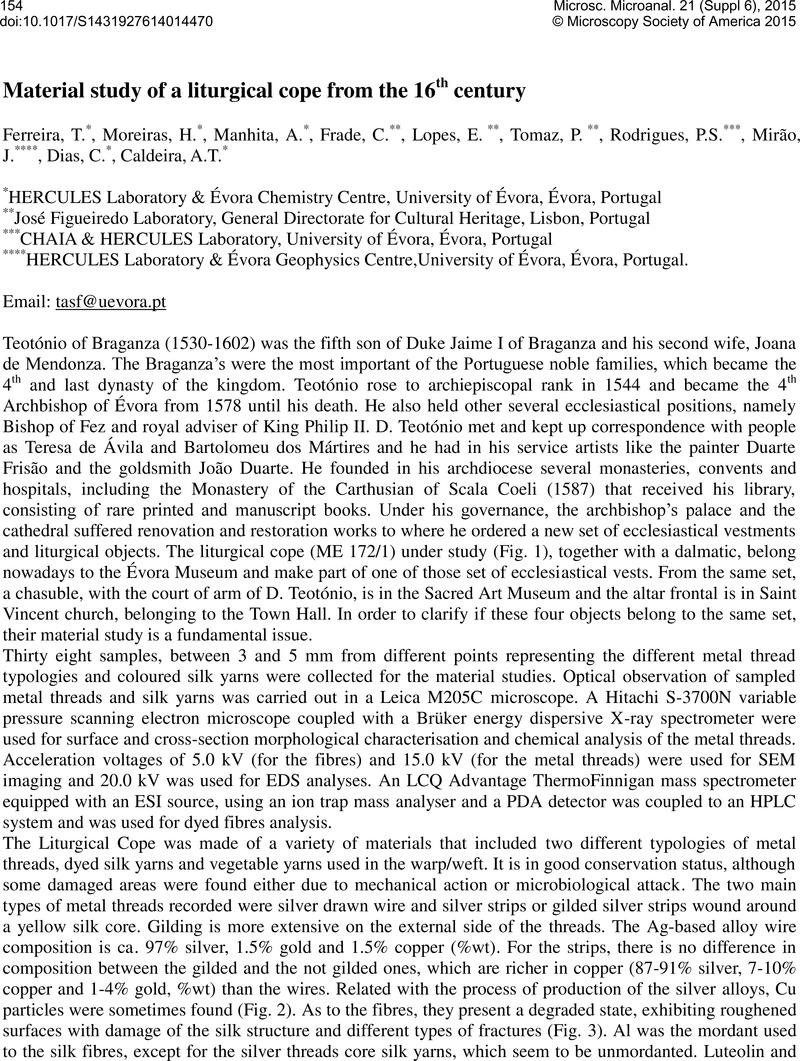No CrossRef data available.
Article contents
Material study of a liturgical cope from the 16thcentury
Published online by Cambridge University Press: 10 September 2015
Abstract
An abstract is not available for this content so a preview has been provided. As you have access to this content, a full PDF is available via the ‘Save PDF’ action button.

- Type
- Material Sciences
- Information
- Microscopy and Microanalysis , Volume 21 , Supplement S6: Introduction to the SPMicros Special Issue from the XLVII Annual Congress , August 2015 , pp. 154 - 155
- Copyright
- Copyright © Microscopy Society of America 2015
References
[1] Espanca, T., “Nova miscelânea: D. Teotónio de Bragança – um prelado eborense do tempo de Camões (1530-1602)”, in A cidade de Évora. Évora: V.40-41, n.67-68, p.137-147, 1984/85.Google Scholar




